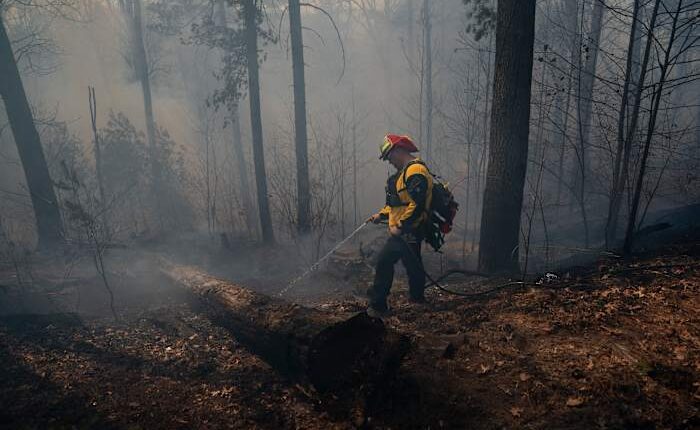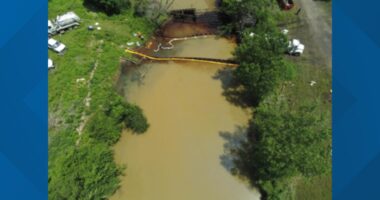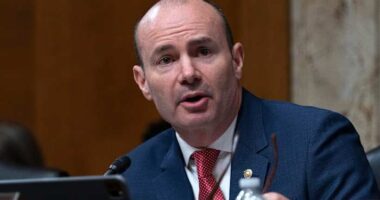
Wildfires are currently ravaging parts of North Carolina, Florida, and Oklahoma due to dry air and debris left by Hurricane Helene. The blazes are spreading uncontrollably, with reports of large fires in eight states. In Florida alone, a fire has consumed approximately 42 square miles in Miami-Dade County, adding to the already dire situation.
The National Interagency Fire Center has reported a staggering 14,800 wildfires that have burned over 1,105 square miles this year, surpassing the 10-year average. Among the most devastating were the Los Angeles wildfires in January, which decimated entire neighborhoods fueled by dry vegetation and strong winds.
Recent years have seen an alarming increase in wildfire occurrences, leading many U.S. fire officials to believe that the concept of a defined “fire season” is no longer applicable. This shift is primarily attributed to climate change, driven by the burning of fossil fuels like gasoline and coal, which has elevated global temperatures. Consequently, these warmer conditions result in drier landscapes that fuel longer and more intense wildfires, predominantly sparked by human activities.
While major fires often happen early in the year — in February 2024, Texas experienced the largest wildfire in state history — this year is a bit unusual “because we’re seeing it happen in so many places,” said Brad Rippey, a U.S. Department of Agriculture meteorologist who monitors drought.
This week, 45% of the country is in drought, when historically it’s around 20% at any given time, Rippey said. That dried out lots of fuel just waiting for a spark — from freeze-dried grasses in the southern Plains to downed trees and brush from hurricanes that ravaged parts of the southeast and southern Appalachians in recent years.
The National Interagency Fire Center’s significant wildfire outlook notes that several states still have debris from hurricanes Laura, Ida, Debby and Idalia in the past five years, as well as from ice storms and other severe weather.
Add in gusty winds and low humidity, “and you’ve got a pretty ripe situation for wildfires,” Rippey said.
In Hurricane Helene-devastated North Carolina, power lines downed by strong winds have been blamed for two of three large fires that have burned for more than a week in an area where the mean relative humidity this month has been the lowest on record, officials said. Impassable areas and lots of toppled trees are making it difficult to reach intense and erratic fires that are spreading rapidly because of high winds and dry weather.
Many roads have either been covered with storm debris or “they have just been completely washed away,” said North Carolina Forest Service spokesman Philip Jackson, who said the fire danger could plague the state for years as more debris dries out.
Much of Florida also is in drought, contributing to an earlier-than-normal fire season that included a massive brush fire in Miami-Dade County that at one point hindered travel to and from the Florida Keys.
That fire is 95% contained while dozens of smaller fires continue to burn, according to the Florida Forest Service. Many counties are under red flag warnings, meaning conditions are favorable for fires to occur.
West Virginia, Tennessee, Georgia, Missouri and South Carolina also report large wildfires.
The greatest wildfire potential is in the southeast and the southern Plains, and will be significant into April in most of Texas and parts of New Mexico and Arizona, as well as several southeastern states, according to the National Interagency Fire Center.
La Nina — a periodic cooling of the Pacific Ocean that can shift the jet stream and lead to cooler, drier air — might have affected conditions in the southern U.S., said Tim Brown, director of the Western Regional Climate Center.
But there also has been long-term drying in the southwest as temperatures overall increase with global warming, said Rippey, who has monitored drought for more than 25 years. Warmer temperatures have led to more erratic precipitation that tends to fall more heavily in short periods, leading much of it to run off rather than soak into the ground.
“I do think that contributes to more wildfires,” he said.
___
The Associated Press’ climate and environmental coverage receives financial support from multiple private foundations. AP is solely responsible for all content. Find AP’s standards for working with philanthropies, a list of supporters and funded coverage areas at AP.org.
Copyright 2025 The Associated Press. All rights reserved. This material may not be published, broadcast, rewritten or redistributed without permission.

















